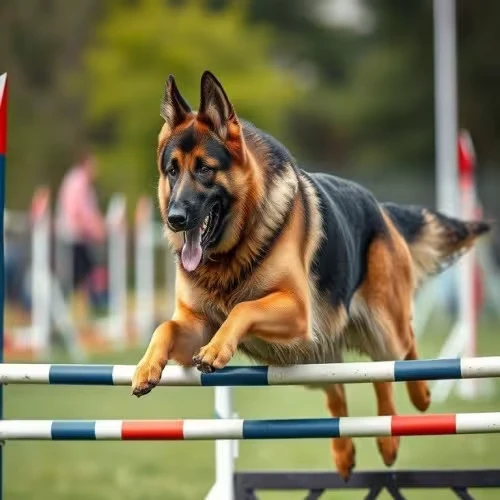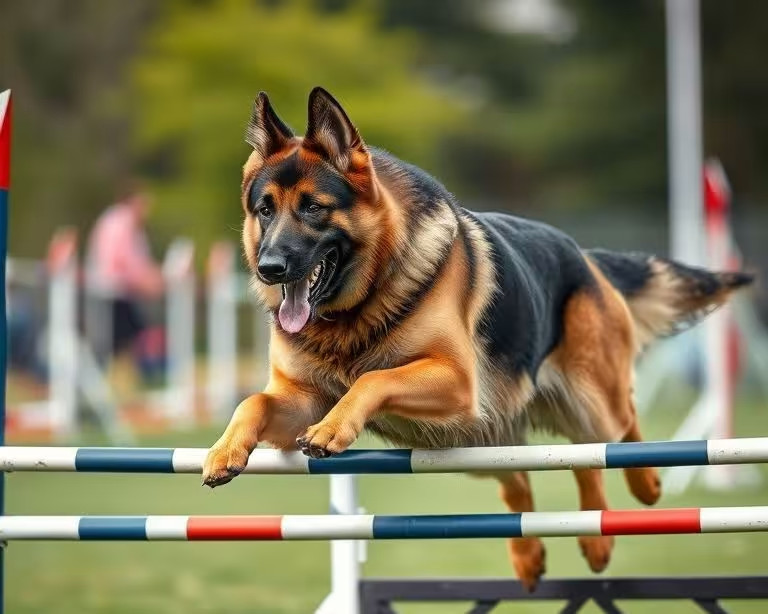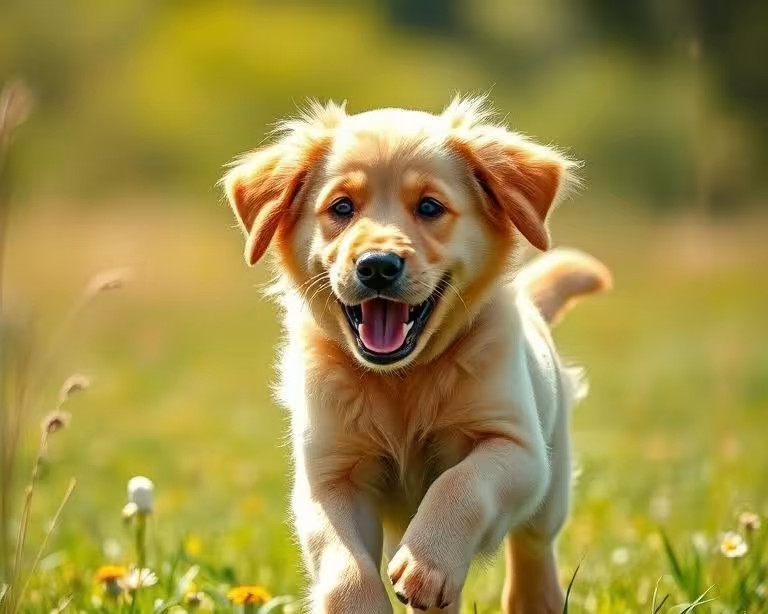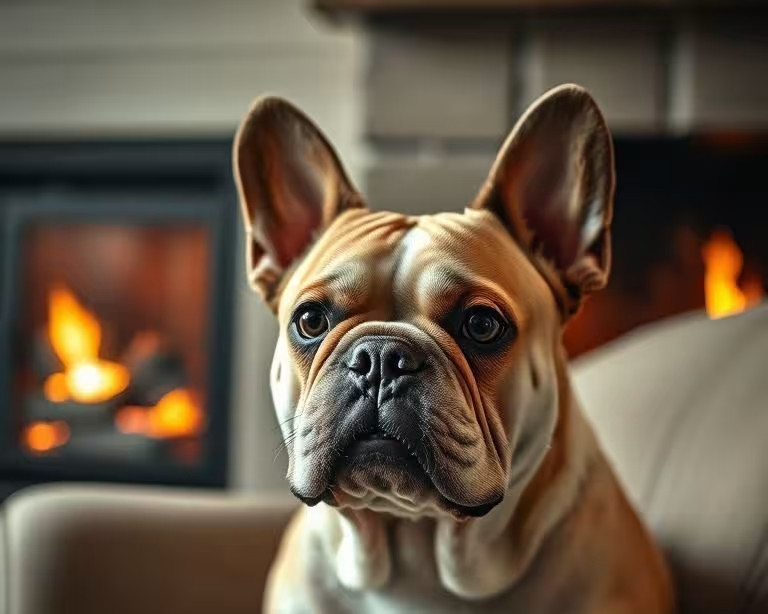Indestructible Fun: The Ultimate Guide to Dog Training Toys for Aggressive Chewers

For dog owners, few things are as frustrating as watching a brand-new toy shredded to pieces within minutes. If you share your home with an aggressive chewer, you know the struggle is real. These powerful pups don't just chew for fun; it's often an innate drive, a way to relieve stress, clean teeth, explore their world, and burn off excess energy. The good news? There’s a vast world of specialized dog training toys designed to withstand even the most determined jaws, providing both entertainment and essential mental stimulation.
This comprehensive guide dives deep into the science behind aggressive chewing, the crucial role of appropriate toys in your dog's overall well-being, and a data-driven comparison of the top brands. We’ll equip you with the knowledge to make informed decisions, ensuring your canine companion stays safe, happy, and stimulated.
Understanding Your Aggressive Chewer: Why Dogs Chew So Much
Chewing is a natural, instinctive behavior for dogs. From the playful nipping of a puppy to the focused gnawing of an adult, it serves multiple purposes. For aggressive chewers, this instinct is amplified, often leading to destructive behaviors if not properly redirected. Understanding the 'why' is the first step towards finding the right 'what'.
The Instinctual Drive Behind Destructive Chewing
Dogs explore their world with their mouths. Chewing helps puppies relieve discomfort during teething and strengthens their jaws as adults. It's a natural way to clean teeth, massage gums, and keep dental hygiene in check. Beyond this, chewing is a significant stress reliever, a form of self-soothing that can help alleviate boredom, anxiety, and even fear. A dog that doesn't have appropriate outlets for this instinct will often turn to furniture, shoes, or other household items.
Connecting Chewing to Physical and Mental Needs
The need for exercise and mental stimulation (as highlighted in the provided guide to dog needs) directly impacts chewing behavior. High-energy breeds, or dogs that aren't getting enough physical activity, often turn to chewing as a way to burn off pent-up energy. Similarly, intelligent dogs who lack mental challenges can become bored and resort to destructive chewing. Training toys for aggressive chewers often serve a dual purpose: providing an appropriate chewing outlet *and* offering mental engagement through puzzles or treat dispensing mechanisms. This holistic approach is key to a well-adjusted dog.
Identifying Truly Indestructible Materials for Dog Toys
Not all 'durable' toys are created equal. For aggressive chewers, material science is paramount. Here's a breakdown of the most effective materials and what makes them stand out:
- Natural Rubber: Often sourced from trees, natural rubber toys are incredibly resilient and have a satisfying bounce. Look for high-density, thick-walled rubber, which offers a good balance of durability and flexibility. Brands like KONG are famous for their proprietary natural rubber compounds.
- Heavy-Duty Nylon: Many popular chew toys are made from hardened nylon. These are designed for persistent chewers, offering extreme durability. They often have textured surfaces to help clean teeth and come in various flavors to entice dogs. Nylabone is a prime example.
- Proprietary Composites: Some brands develop their own blends of materials to achieve superior strength, flexibility, and safety. These might combine different polymers to create a unique chewing experience that stands up to extreme pressure.
- Wood-Based Chews (e.g., Coffee Wood, Olive Wood): These offer a natural, safe alternative to sticks found outdoors. They are very hard and gradually wear down without splintering, providing a long-lasting and satisfying chew.
- Thick, Ballistic Nylon Fabric (for soft toys): While no fabric toy is truly indestructible for an aggressive chewer, some are made with multiple layers of ballistic nylon and reinforced stitching, offering a more durable option for dogs who enjoy tearing apart softer items.

Beyond Durability: Mental Stimulation and Training Benefits
While durability is non-negotiable for aggressive chewers, the best toys also offer significant training and mental enrichment opportunities. These toys address multiple aspects of a dog's well-being:
Puzzle Toys for Canine Cognition
Puzzle toys are fantastic for mental stimulation. They challenge your dog to figure out how to get treats out, requiring problem-solving skills and patience. For aggressive chewers, look for puzzle toys made from the same durable materials as their chew toys. These can dramatically reduce boredom and prevent destructive behaviors stemming from a lack of mental engagement.
Treat-Dispensing Toys for Engagement and Slow Feeding
Many durable chew toys also double as treat dispensers. Filling a KONG with peanut butter, yogurt, or kibble provides a long-lasting activity that satisfies the chewing instinct while rewarding your dog for appropriate behavior. This can be particularly useful for dogs with separation anxiety, offering a positive distraction when you leave home.
Interactive Toys for Bonding and Play
Even aggressive chewers need interactive play with their humans. Sturdy tug toys or fetch toys made from durable rubber can withstand vigorous play sessions, strengthening the bond between you and your dog. Toys that encourage interaction provide a physical outlet and contribute to their social needs.

Top Brands: A Data-Driven Comparison of Dog Training Toys for Aggressive Chewers
Choosing the right toy can be overwhelming with so many options. Here’s an in-depth look at some of the most popular and highly-rated brands, focusing on their specific features for aggressive chewers.
1. KONG Extreme
- Material: Ultra-durable, proprietary black natural rubber.
- Durability Rating: Designed for the toughest chewers; often considered the benchmark for extreme durability.
- Key Features: Hollow interior perfect for stuffing with treats (peanut butter, kibble, frozen purees). Erratic bounce for engaging fetch. Promotes healthy chewing habits.
- Typical Price Range (Medium-Large): $15-$25
- Pros: Virtually indestructible for most dogs. Excellent for mental enrichment and anxiety reduction. Dishwasher safe. Veterinarian and trainer recommended.
- Cons: Can be difficult to clean if not stuffed properly or cleaned promptly. Limited shape variety.
2. Nylabone DuraChew/Power Chew
- Material: Tough, non-toxic nylon.
- Durability Rating: Specifically engineered for powerful chewers, often rated for 'extreme' or 'power' chewing.
- Key Features: Available in many shapes (bones, rings, dental chews) and flavors (bacon, chicken, original). Textured surfaces help clean teeth and control plaque/tartar.
- Typical Price Range (Medium-Large): $10-$20
- Pros: Long-lasting. Promotes dental health. Various shapes and flavors to keep dogs interested. Does not leave a mess.
- Cons: Can be very hard, potentially risky for dogs with sensitive teeth or older dogs. Some dogs lose interest if no food reward is involved.
3. Benebone Wishbone/Dental Chew
- Material: Durable nylon infused with real food flavors (bacon, peanut, chicken).
- Durability Rating: Built for strong chewers.
- Key Features: Ergonomic, paw-friendly designs (wishbone, dental chew, Zaggler) allow dogs to get a good grip. Infused with 100% real food ingredients for irresistible flavor.
- Typical Price Range (Medium-Large): $12-$20
- Pros: Excellent grip for dogs. Strong, appealing scents keep dogs engaged. Made in the USA.
- Cons: Can be very hard like Nylabone, posing similar dental risks for some dogs. Not suitable for ingestion (shavings should be small).
4. West Paw Zogoflex Series (e.g., Hurley, Tux, Jive)
- Material: Proprietary Zogoflex material (eco-friendly, recyclable, non-toxic, BPA-free, latex-free).
- Durability Rating: Guaranteed tough. Often floats and is dishwasher safe.
- Key Features: Range of shapes for different purposes (fetch, treat-stuffing, tug). Flexible yet incredibly durable. Bright colors for visibility.
- Typical Price Range (Medium-Large): $15-$28
- Pros: Extremely durable and flexible. Safe, non-toxic, and recyclable. Floats for water play. Dishwasher safe. Many come with a one-time replacement guarantee.
- Cons: Some dogs might be able to chew off small pieces over time (though usually rare and covered by guarantee).
5. GoughNuts Chew Toys
- Material: Natural rubber with a unique two-layer safety indicator.
- Durability Rating: Explicitly designed for power chewers, offering extreme resistance.
- Key Features: If a dog chews down to the red inner layer, it indicates it's time to replace the toy, offering an unparalleled safety feature. Available in various shapes (rings, sticks).
- Typical Price Range (Medium-Large): $20-$40
- Pros: Exceptional durability and safety feature. Guaranteed for life (if they chew to the red, send it back for a replacement). Made in the USA.
- Cons: Higher price point. Limited variety in shapes and colors compared to others.
Choosing the Right Dog Training Toy for Your Aggressive Chewer
Selecting the perfect toy involves more than just picking the 'toughest' one. Consider these factors:
Matching Toy Durability to Chew Strength
Evaluate your dog's chewing style. Are they a 'gnawer' who slowly grinds down toys, or a 'destroyer' who attempts to rip things apart? Match the toy's material and construction to their specific strength. For extreme chewers, materials like KONG Extreme rubber, GoughNuts, or heavy-duty nylon are essential.
Considering Size and Shape for Safety
The toy must be appropriately sized. Too small, and it can become a choking hazard. Too large, and your dog might struggle to engage with it properly. Odd shapes can provide mental challenges, while specific textures can aid dental health. Always ensure the toy is too large for your dog to swallow whole or get lodged in their throat.

The Role of Flavor and Scent in Engagement
While durability is key, dogs are often driven by scent and taste. Toys infused with dog-safe flavors (like Benebone) or those designed to hold treats (like KONG) can significantly increase engagement, making the toy more appealing than your furniture.
Prioritizing Non-Toxic and Safe Materials
Always check for non-toxic materials. Reputable brands will explicitly state their materials are free from BPA, phthalates, and other harmful chemicals. This is particularly crucial for toys that will be in your dog's mouth for extended periods.
Maintenance, Safety, and Best Practices for Durable Dog Toys
Even the toughest toys need proper care and supervision to ensure your dog's safety and the toy's longevity.
Regular Inspection for Wear and Tear
Aggressive chewers are masters of destruction. Regularly inspect all toys for cracks, loose pieces, or excessive wear. If a toy shows signs of significant damage that could lead to your dog ingesting large pieces or creating sharp edges, it's time to replace it. The GoughNuts red indicator is a fantastic example of a built-in safety check.
Cleaning and Hygiene of Chew Toys
Chew toys can harbor bacteria. Many durable toys are dishwasher safe (check manufacturer instructions) or can be cleaned with warm, soapy water. Regular cleaning ensures good hygiene, especially for treat-stuffing toys.
Supervised Play and Toy Rotation
Even with the most durable toys, supervised play is recommended, especially initially. No toy is truly 100% indestructible. Rotate toys regularly to keep your dog's interest piqued and prevent boredom, which can lead to destructive behaviors even with the best toys.
Redirecting Inappropriate Chewing
If your dog starts chewing on household items, calmly interrupt the behavior and immediately redirect them to an appropriate, durable chew toy. Praise and reward them when they engage with the designated toy. Consistency is key in teaching them what is and isn't okay to chew.
Frequently Asked Questions About Dog Training Toys for Aggressive Chewers
What makes a dog an aggressive chewer?
Aggressive chewing often stems from a combination of natural instincts, breed-specific drives, insufficient physical exercise, lack of mental stimulation, anxiety, or even teething in puppies. Some breeds are naturally more predisposed to powerful chewing due to strong jaws and a genetic predisposition to 'work' their mouths.
Can any toy truly be indestructible?
While no toy is 100% indestructible, certain brands and materials come very close for most dogs. Toys made from high-density natural rubber (like KONG Extreme, GoughNuts, West Paw Zogoflex) or durable nylon (like Nylabone, Benebone) are designed to withstand extreme chewing far better than standard toys. Always prioritize safety and inspect toys regularly.
How do I know if a toy is safe for my dog?
Look for toys made from non-toxic materials, free from harmful chemicals like BPA and phthalates. The toy should be appropriately sized for your dog – too small is a choking hazard, too large might not be engaging. Read reviews and check manufacturer guarantees. If a toy starts to break apart, discard it immediately.
Are dental chew toys effective for aggressive chewers?
Yes, many durable chew toys for aggressive chewers are specifically designed with textures and shapes that help scrape plaque and tartar off teeth as your dog chews. Brands like Nylabone and Benebone offer dental-focused designs. While not a substitute for professional dental care, they can certainly contribute to better oral hygiene.
How often should I replace chew toys for an aggressive chewer?
The replacement frequency depends entirely on the toy's durability and your dog's chewing intensity. Inspect toys daily for significant wear, cracks, or pieces breaking off. If a toy shows signs of becoming a hazard (e.g., sharp edges, pieces small enough to be swallowed), replace it immediately. Some premium brands like GoughNuts offer replacement guarantees, indicating when a toy has reached its limit.
Can puzzle toys help reduce destructive chewing in aggressive chewers?
Absolutely! Destructive chewing is often a symptom of boredom or lack of mental stimulation. Puzzle toys engage your dog's brain, providing a challenging activity that redirects their energy and focus. When combined with durable chew toys, puzzle toys can be a powerful tool in curbing inappropriate chewing behaviors.
What should I do if my dog ignores their new durable chew toy?
Try making the toy more appealing. For hollow rubber toys, stuff them with high-value treats (peanut butter, frozen broth). For solid nylon or wood chews, try rubbing them with a small amount of a tasty spread. Introduce the toy during a calm period, and praise your dog when they show interest. Sometimes, rotating toys or offering different textures/flavors can help pique their interest.
Conclusion: A Lifetime of Happy, Healthy Chewing
Providing the right dog training toys for aggressive chewers is more than just stopping destructive behavior; it's about enriching your dog's life. By understanding their powerful chewing instincts, selecting toys made from truly durable and safe materials, and offering stimulating options, you fulfill their physical, mental, and emotional needs. Invest wisely in these essential tools, and you’ll foster a happier, healthier, and more harmonious home for both you and your extraordinary canine companion.

 By
By
This guide is incredibly thorough! Beyond the toy recommendations, do you have any tips on *introducing* these new, more durable toys to a dog who's used to shredding everything? Sometimes my dog loses interest if it's not instantly gratifying, and I want to make sure they're a hit.
I finally found a toy that lasted more than a week after countless failures – it was a specific brand of solid rubber toy, which this guide touches upon. The mental stimulation it provided was incredible, and his destructive chewing on furniture almost completely stopped. It's a game-changer when you find the right one!
This isn't just another listicle of toys; it's a true *guide*. I've read countless articles on aggressive chewers, and this is by far the most comprehensive and informative one I've found. This site is quickly becoming my go-to resource for dog health and behavior!
Finally, an article that actually dives into the *science* behind aggressive chewing instead of just listing toys! The part about it being an innate drive and not just boredom really resonated. Thanks for explaining the 'why' so thoroughly, it truly helps.
I'm always hesitant to buy new toys because they just don't last. For the training toys mentioned, particularly those designed for mental stimulation, are there any that are also good for stuffing with treats, or do they primarily focus on chewing satisfaction? Looking for dual purpose options!
Thank you for reading! I hope this guide empowers you in navigating the world of aggressive chewers. Remember, understanding *why* your dog chews excessively is paramount to addressing the behavior. Equally critical is selecting truly durable, safe, and stimulating toys to satisfy their innate drives and prevent destruction. When in doubt about your dog's chewing habits or any related concerns, always consult your veterinarian. They can offer personalized advice and ensure your dog's well-being. Happy chewing!
This guide is exactly what I needed! You mentioned a data-driven comparison of top brands – could you elaborate on which specific KONG extreme models or GoughNuts toys you found performed best for *super* aggressive pit bull chewers? My boy destroys everything and I'm ready to invest in the right one.
I used to think my dog just chewed for pure naughtiness, but reading about it being an innate drive and a way to relieve stress completely shifted my perspective. This article really helped me understand it's not just about 'fun' but about well-being. Thank you for clearing up that common myth!